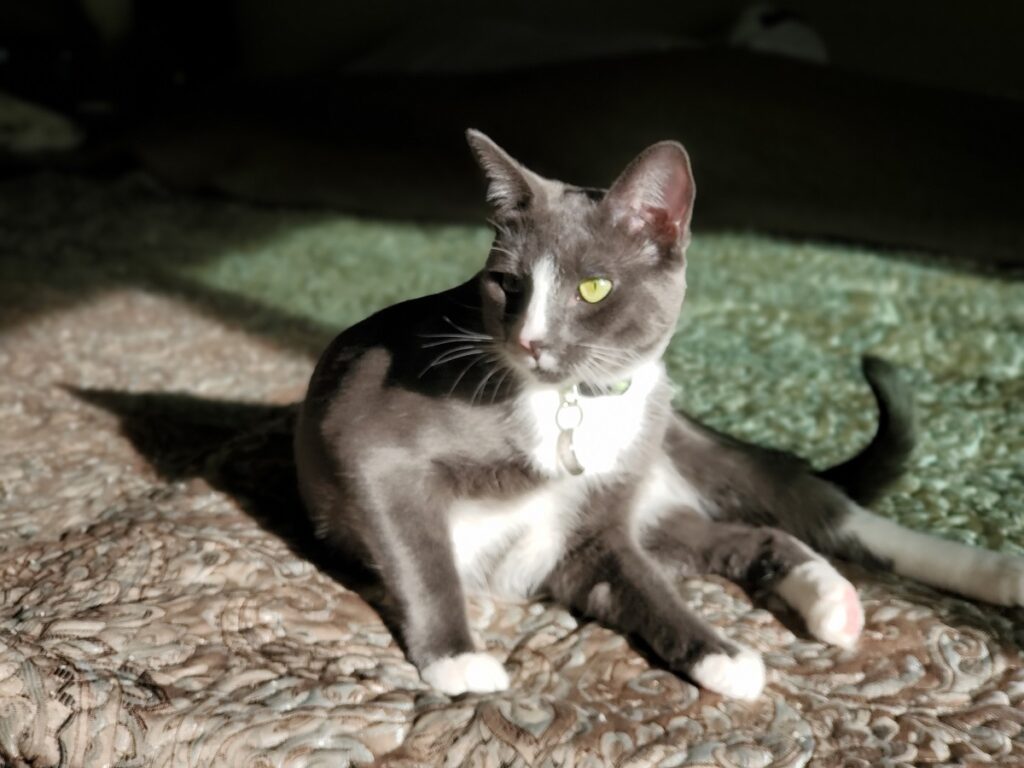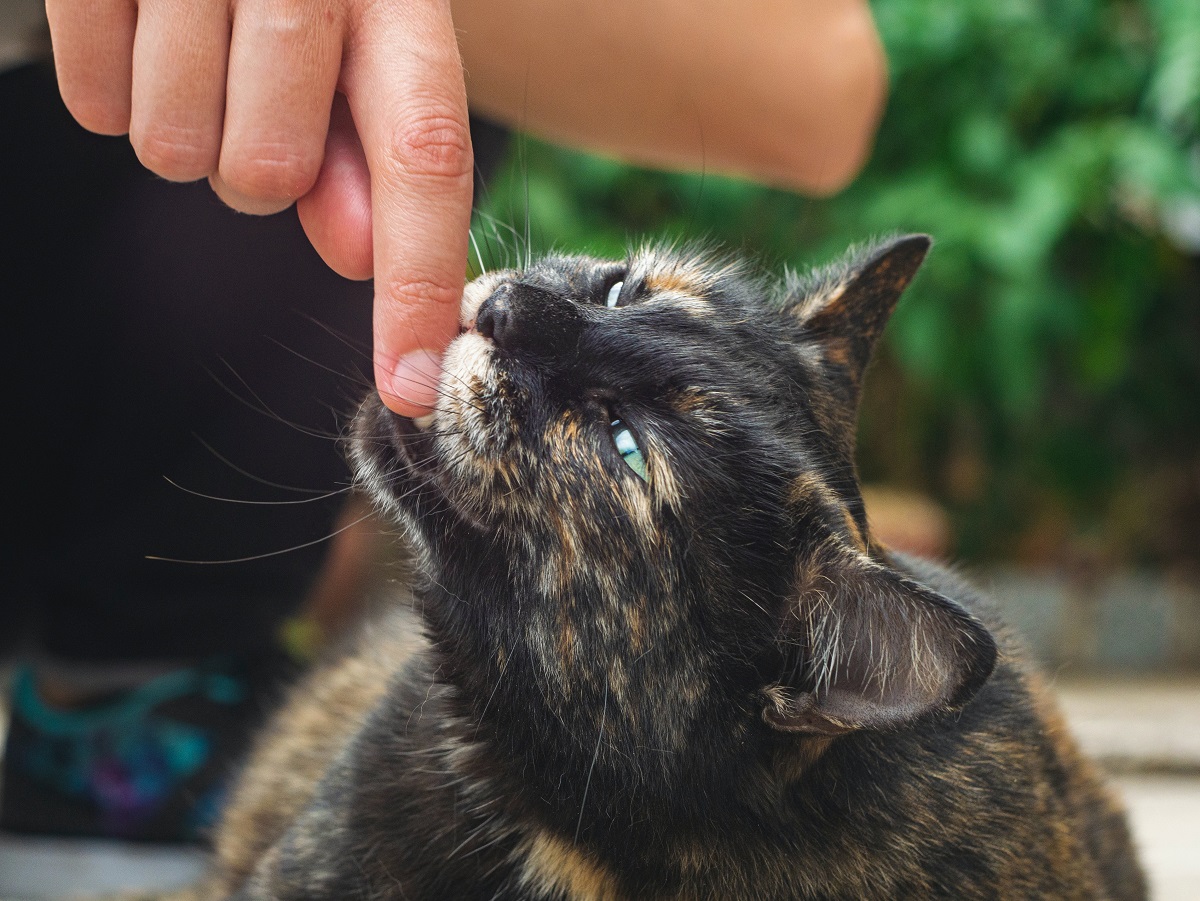You’re enjoying a cozy cuddle session. Your cat is purring, relaxed, maybe even giving you the slow blink of love. Then out of nowhere… chomp. Or maybe a bunny kick. Or the full drama of a tail flick, growl, and bolt. What just happened?
When a cat suddenly goes from cuddling to attacking, it is usually not a sign of aggression. It is a communication breakdown. Your cat was trying to tell you they were done, and you missed the memo. The good news? With a little observation and understanding, you can spot the signs before the claws come out.
Let’s take a look at why cats do this, what signs to watch for, and how to keep cuddle time sweet instead of spicy.
The Petting Threshold Is Real
Unlike dogs, who may soak up affection indefinitely, cats often have a limit to how much physical contact they enjoy. This limit varies from cat to cat, and even from day to day. Some cats are touch-sensitive. Others simply have short patience when it comes to repeated strokes in the same spot.
This is often referred to as petting-induced overstimulation. In simple terms, your cat went from “this is nice” to “get off me” in the span of a few seconds.
Overstimulation builds up during petting, especially on sensitive areas like the belly, back, or base of the tail. If your cat has reached their threshold and you don’t stop, they might deliver a gentle warning. Or a not-so-gentle one.
Common Warning Signs Before the Swipe
Cats almost always give warning signals before reacting with teeth or claws. They are subtle, but if you learn what to look for, you can stop before things escalate.
Keep an eye out for:
- Tail flicking or twitching
- Flattened ears
- Sudden stillness or tension
- Skin twitching along the back
- A sudden head turn toward your hand
- Pupils dilating or becoming narrow
These signs usually mean your cat has had enough and is getting uncomfortable. If you continue petting, they may react to stop it.
This is not a betrayal. It is just their way of setting a boundary. They do not hate you. They are just done for now.
Why It Happens During Cuddling
Cuddling is not just about petting. It is also about proximity. Your cat might enjoy being near you, sharing warmth, or even sitting on your lap. But they may not enjoy being touched the entire time.
Physical closeness and physical touch are not always the same thing in the cat world. A cat can happily lie on your chest but still get annoyed if your hand keeps stroking them for ten minutes straight.
It is also possible your cat is overstimulated from other things such as noise, stress, or too much activity, and your petting just tipped them over the edge.
Some cats have an especially low threshold due to past trauma or sensitivity. If your cat was previously a stray or has a history of rough handling, they may have less tolerance for extended physical contact.
Redirected Aggression Can Be a Factor
Sometimes your cat lashes out at you because they are frustrated by something else. This is called redirected aggression. It happens when your cat sees or hears something that stresses them out like a bird outside, another animal, or a loud sound, but cannot act on it. The energy builds, and the closest target becomes you.
You might have been petting them during this buildup, and the attack seems to come out of nowhere. But in reality, they were reacting to something entirely unrelated.
In these cases, the best thing to do is give your cat space and let them cool off. Never punish them. That will only make them more stressed and less trusting.

Silly human. You thought I was just a sweet, innocent ball of fluff, didn’t you? One moment I’m purring, enjoying your warm embrace, and the next… BAM! I unleash my inner tiger. The look of shock on your face is priceless! So, brace yourself for the next surprise attack. It’s just how I roll. #CuddleAndPounce #FierceFeline #ExpectTheUnexpected #CatsRuleHumansDrool #PawsOfDestruction
Winston the Lionhearted
How to Prevent Sudden Swats
While you might not be able to stop every surprise attack, you can definitely lower the chances of one happening.
Here’s how to keep cuddle time calm and drama-free:
- Pet with purpose. Focus on areas your cat enjoys, like the cheeks, under the chin, or the base of the ears. Avoid the belly unless invited.
- Watch for signs. If your cat’s tail starts twitching or their ears flatten, take a break.
- Use short sessions. Many cats prefer multiple short interactions over one long petting marathon.
- Let them initiate. Allow your cat to come to you when they want affection. Don’t chase them down with love.
- Redirect energy. Give your cat regular play sessions to release tension in a healthy way.
By respecting your cat’s preferences and tuning into their body language, you show them you are a safe and understanding companion. That builds trust over time.
Final Thoughts: From Bitey to Bestie With a Bit of Understanding
When a cat goes from cuddles to chaos, it is not personal. It’s communication. They were enjoying the moment, but something shifted, and you missed the signal. The good news is that your cat is not trying to confuse you. They are just following their instincts.
Learning to read your cat’s signals will make both of your lives better. You’ll get fewer scratches. They will feel more in control of their space. And over time, those cuddles might just last a little longer each day.
Because nothing says “I love you” like a cat choosing to stay in your lap. Especially when they could be anywhere else in the world.
Sources:
Petting-Induced Aggression in Cats https://www.vet.cornell.edu/departments-centers-and-institutes/cornell-feline-health-center
Understanding Cat Body Language https://www.humanesociety.org/resources/understanding-your-cats-body-language
Cat Aggression Explained https://www.icatcare.org/advice/aggression-in-cats
Redirected Aggression in Cats https://vcahospitals.com/know-your-pet/aggression-redirected-in-cats
Recent Posts
Your Cat Might Be a Furry Little Healer… or at Least a Fuzzy Alarm System If you’ve ever had your cat suddenly become extra clingy when you’re under the weather, you’re not alone. From...
Cats are experts at hiding things, socks under furniture, their disdain for your playlist, and, unfortunately, symptoms of illness. In the wild, showing weakness could make them a target, so even...


